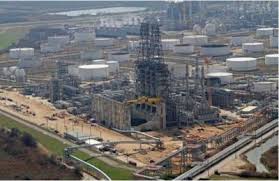Light tight oil (LTO) production growth has strained refinery balances on the light end of the barrel, resulting in less heavier feedstocks previously available in sufficient quantities, including vacuum resid and vacuum gas oil (VGO) to the FCC unit. On the heavy end, the growth in oil sands production is straining coking capacity. Based on the oil sands outlook, over 600,000 bpd of additional oil sands residue will become available through 2025 according to a recent Turner Mason study.
The study noted that even if PADD 3 (U.S. Gulf Coast) coker inputs were to increase to 90% utilization and then creep upward at 1% annually, less than half of the additional residue could be accommodated. Displacement of offshore medium and heavy crude supplies, and potentially coker capacity additions, will need to continue for the increase in oil sand volumes to be processed.
At the same time, resid fuel processing is re-emerging in importance as the market for bunker fuels, such as No. 6 fuel oil, shrinks to 40% of the current market by 2030, according to Lloyds Registry. The International Chamber of Shipping (ICS) has agreed that the shipping and bunker refining industries should prepare for a world 0.5% sulfur in fuel cap by 2020, as required by the International Maritime Organization (IMO). Although it’s possible that required worldwide implementation will be extended to 2025, it’s clear that refiners capable of replacing fuel oil production with higher marine diesel yields will benefit from the “first to market” opportunities as emissions control areas (ECA) fuels requirements expand global and ocean going vessels prepare for the IMO requirements.
So what can we expect to see in coking-centric refining regions, such as North America and China? Because much of the limited capital available is targeting expansion of hydrotreating and desulfurization capacity to meet Tier 3 and Euro 5 fuels specifications, only marginal coking expansion projects are expected in North America, while future Asian coking capacity is challenging to estimate, as the availability of Arab Heavy and other crudes from the Middle East and Venezuela are subjected to political volatility. Eventually, strategic plans to minimize fuel oil production will influence large coking capacity projects.
With the Middle East and Russia/Eastern Europe refiners yielding an average of 25% fuel oil on a crude run basis, as compared to only 5% fuel oil yield in the North American refining industry, refiners in the Middle East plan to expand coking capacity to minimize fuel oil production. For example, in the United Arab Emirates (UAE), the Abu Dhabi National Oil Refining Company’s (TAKREER) combined Ruwais East and West refineries will incorporate an integrated carbon black delayed coking unit in the expansion of the complex from 510,000 bpd to 930,000 bpd. When the project is completed and the coker is in operation, fuel oil production will be eliminated from the current 1.1 million tons per year (tpy) of fuel oil and residue production, while diesel production will increase to 11 million tpy from the current 5.5 million tpy.
From a petrochemical perspective, the DCU will provide 1.6 million tpy of propylene production. The feedstock to the carbon black and DCU project will include slurry oil from the Ruwais West refinery (new facility) and vacuum resid from the Ruwais East refinery (original facility). So it seems that there are compelling reasons for DCU expansion throughout the world, particularly in the Middle East.








Leave a Reply
You must be logged in to post a comment.